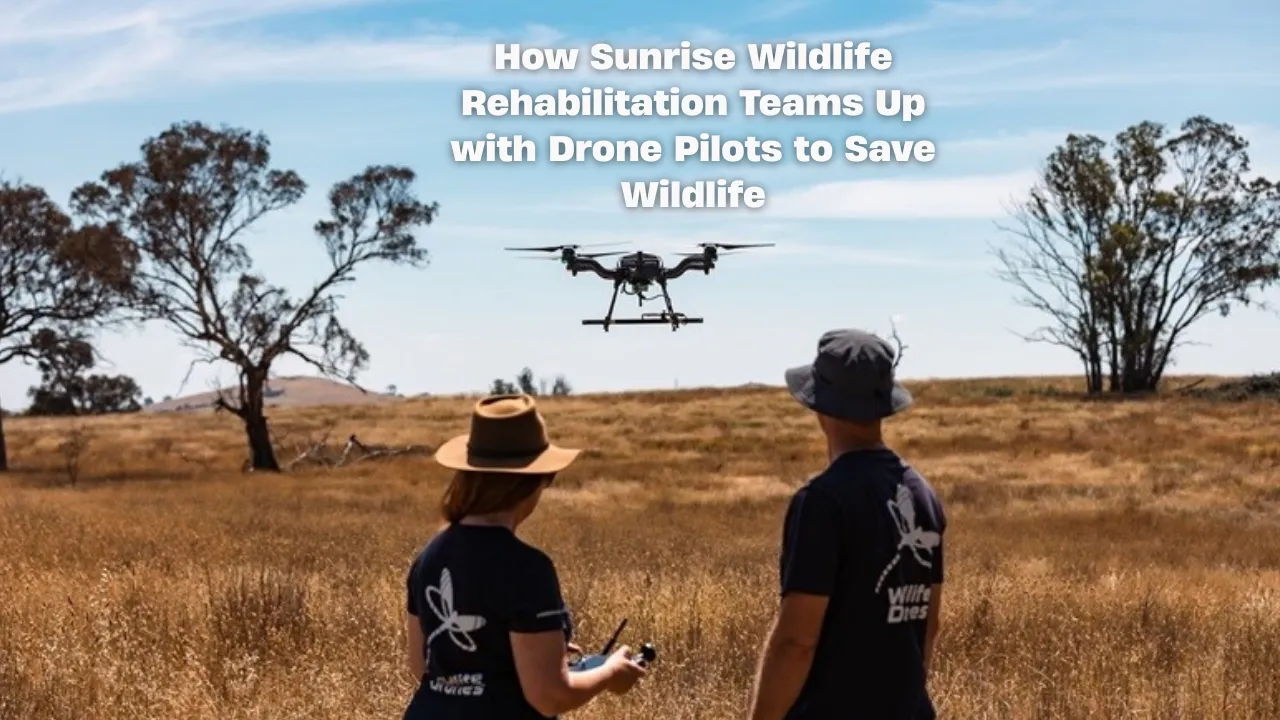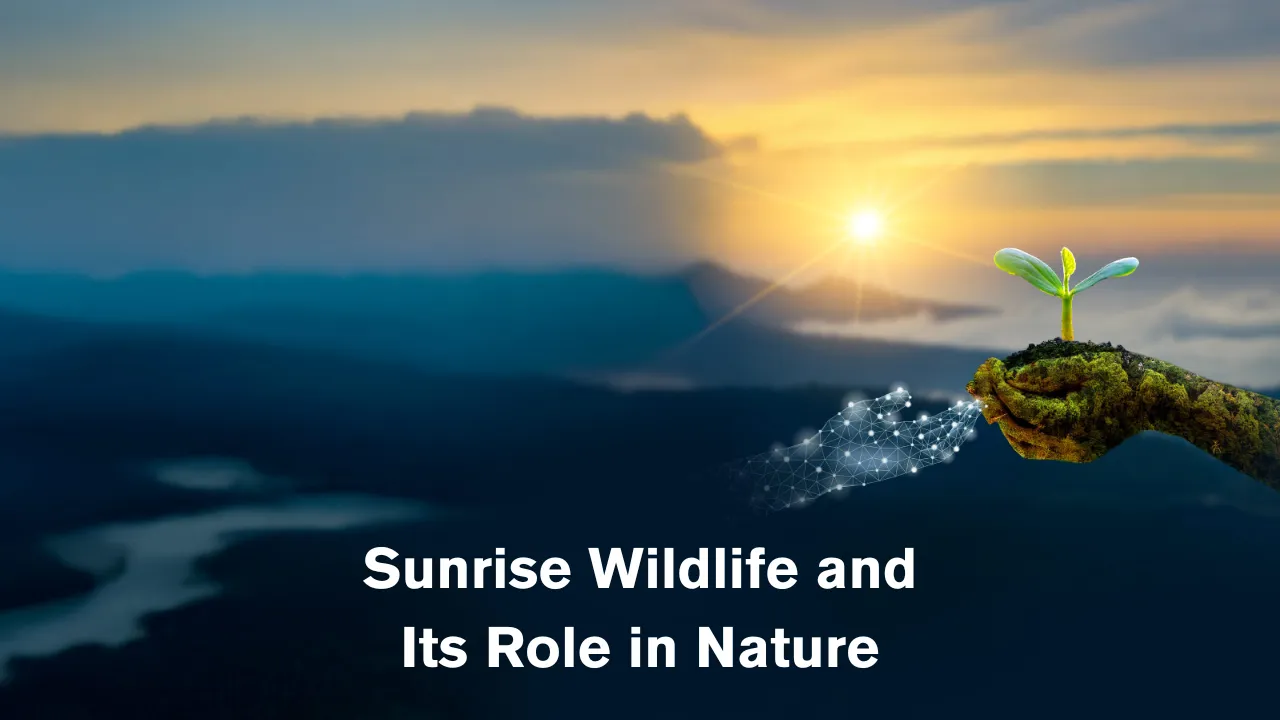How Sunrise Wildlife Rehabilitation Uses Citizen Drone Pilots to Locate Distressed Wildlife is a story of determination, community, and technology working together. With the help of trained volunteers operating drones, the center can find and assist injured or stranded animals in record time. This work is not just about flying machines in the air — it is about protecting the lives of wild creatures who might otherwise go unseen.
In this article, we explore the innovative approach taken by Sunrise Wildlife Rehabilitation, how they collaborate with everyday citizens, the role of drone technology in wildlife rescue, and the impact this has had on both the animals and the community. We also discuss the challenges, inspiring rescue stories, and the future of this model in other regions.
How Sunrise Wildlife Rehabilitation Uses Citizen Drone Pilots to Locate Distressed Wildlife
The program is built on a simple yet powerful idea — people from all walks of life can contribute to wildlife rescue if they have the right tools and guidance. At Sunrise Wildlife Rehabilitation, drone pilots are trained to identify signs of distress in animals and alert professional rescuers. This partnership allows searches to cover larger areas, respond faster, and operate in terrains that would be difficult or dangerous for humans on foot. The result is a dramatic increase in successful rescues and faster recovery times for the animals found.
Overview of the Program
| Feature | Details |
| Main Goal | Locate and rescue distressed wildlife quickly |
| Technology Used | Drones with HD and thermal cameras |
| Who Operates Drones | Trained volunteer pilots from the community |
| Key Benefit | Faster response times and wider search coverage |
| Challenges | Weather limits, legal restrictions, animal stress |
The Mission of Sunrise Wildlife Rehabilitation
The mission of Sunrise Wildlife Rehabilitation is to give injured, orphaned, and displaced wildlife the best chance at survival. The center focuses on rescue, rehabilitation, and safe release into natural habitats. By embracing modern tools like aerial drones, they have strengthened their ability to spot and reach animals in trouble before it is too late.
This mission extends beyond immediate rescue. The center uses drone footage to identify recurring hazards such as fencing, polluted water, or human disturbances that threaten wildlife safety. This allows them to work with communities to prevent future harm.
Why Drones Are a Game-Changer
Traditional search methods can be slow and labor-intensive, especially in rural or rugged landscapes. Drones for wildlife rescue solve this by offering a bird’s-eye view of large areas in minutes. Pilots can spot unusual movement, heat signatures, or isolated animals from a safe height, transmitting real-time images to the ground team.
Another key advantage is safety. Rescuers do not have to navigate dangerous terrain blindly. Instead, they arrive knowing exactly where to go and what to expect. This speeds up the rescue process and reduces risks for both animals and humans.
Citizen Drone Pilots: Everyday Heroes
The heart of the program lies in its citizen science approach. Many local residents already own drones for hobbies like photography or surveying. Sunrise Wildlife Rehabilitation channels that interest into a life-saving mission by providing basic training in animal behavior and rescue spotting techniques.
These volunteer pilots become the eyes in the sky, patrolling fields, forests, and wetlands when alerts come in. They look for signs such as limping animals, unnatural stillness, or stranded young. Their work is often the first step toward a successful rescue.
How the Citizen Drone Program Works
The system is simple but highly effective:
- Training Sessions – Volunteers attend workshops on identifying distressed animals, safe drone operation near wildlife, and emergency reporting.
- Search Assignments – Pilots are given specific zones to monitor during high-risk times, such as after storms, wildfires, or during nesting seasons.
- Instant Reporting – Possible sightings are sent to the rescue team with GPS coordinates and photos or video evidence.
This process ensures quick and precise action, often leading to same-day rescues.
Benefits of the Program
The program delivers measurable results, not just in numbers but in lives saved. The combination of technology and community involvement means rescues happen faster and cover more ground.
Two of the most significant benefits are:
- Rapid Detection and Response – Early identification increases survival chances dramatically.
- Extended Search Coverage – With more pilots in the field, vast areas can be scanned without overburdening a small rescue team.
Challenges and Solutions
No program is without obstacles. Bad weather can ground drones, while airspace restrictions limit where pilots can fly. The center addresses these issues by coordinating with local authorities and keeping strict compliance with aviation laws.
Another challenge is minimizing stress to animals. Pilots are trained to maintain a safe distance, use minimal noise settings, and avoid prolonged hovering.
Real-Life Rescue Stories
The true measure of success comes from the animals saved. In one instance, a fawn was found trapped in a fence deep in the woods, spotted only because a drone pilot noticed unusual movement from above. In another case, a drone located a waterbird entangled in discarded fishing line on an inaccessible shoreline. Both animals were rescued within hours and later released.
These cases highlight how technology and human compassion can create remarkable results.
Future of Wildlife Rescue with Drones
The future is promising. Sunrise Wildlife Rehabilitation plans to expand the program with advanced features like thermal imaging for nighttime searches and AI-assisted image recognition to speed up spotting. They also aim to share their training model with other rescue organizations worldwide, creating a larger network of citizen drone pilots for wildlife protection.
As more people see the impact of these efforts, the hope is that similar programs will emerge in other regions, increasing the number of animals saved each year.
FAQs
1. How can I volunteer as a drone pilot?
Contact Sunrise Wildlife Rehabilitation to sign up for training and learn the requirements for joining the program.
2. Are drones safe for wildlife?
Yes, when flown responsibly. Pilots are trained to keep a safe distance to avoid causing stress or harm.
3. What kind of drone is needed?
A basic drone with a high-resolution camera is sufficient, though thermal imaging drones are an advantage.
4. Can the program work in urban areas?
Yes, with the right permissions and focus on parks, waterways, and open spaces where distressed wildlife is found.
5. Does the center keep the drone footage?
Yes, it’s used for rescue records, research, and identifying long-term wildlife threats.
Conclusion
The work of Sunrise Wildlife Rehabilitation and its citizen drone pilots proves that modern technology and community action can transform wildlife rescue. By empowering everyday people to become part of the solution, the program covers more ground, acts faster, and saves more lives.
Every flight could mean the difference between life and death for an animal in distress. If you care about protecting wildlife, consider getting involved — whether by volunteering, donating, or simply spreading the word. The sky is no longer the limit when it comes to saving the animals that share our world.


